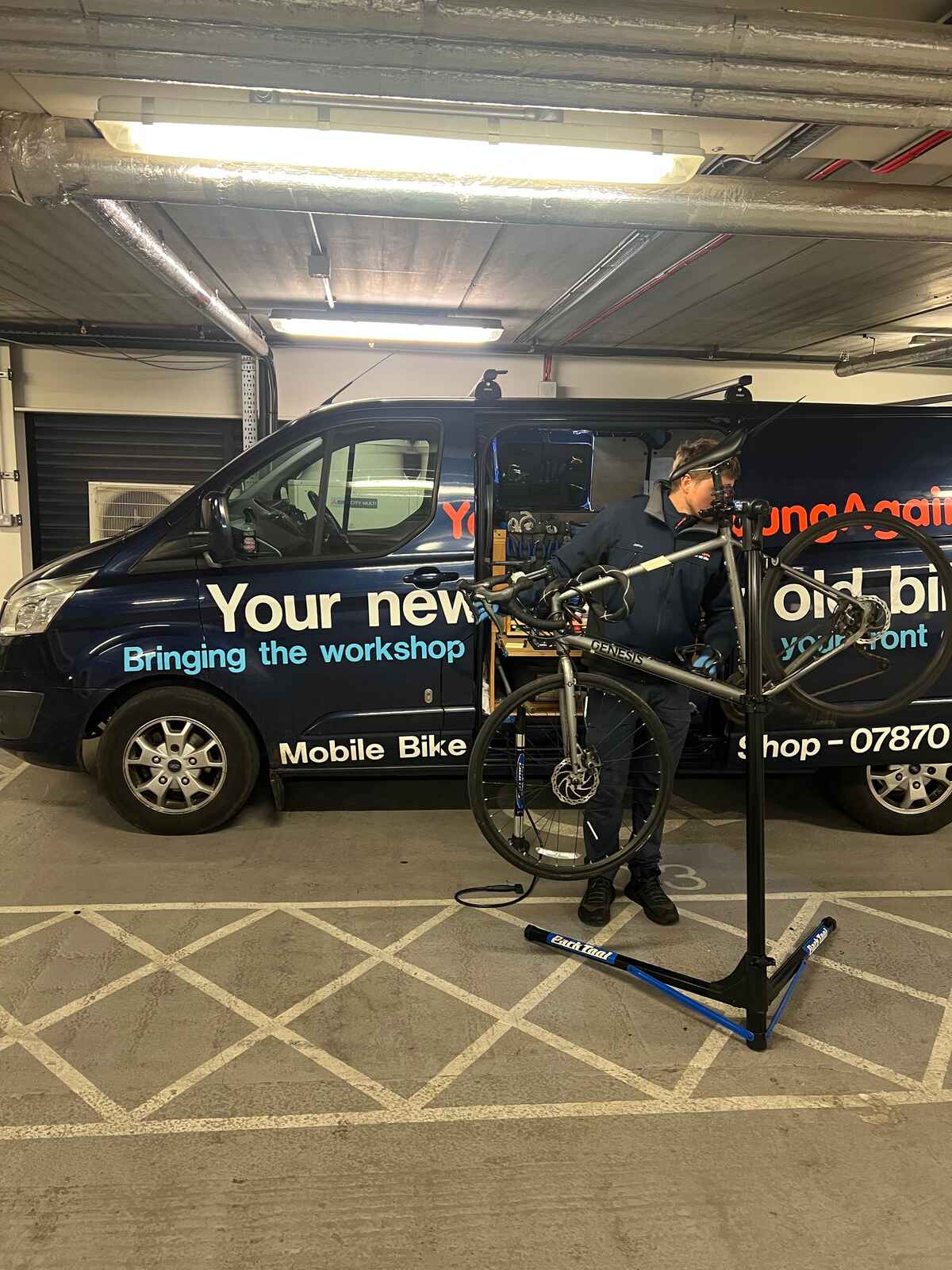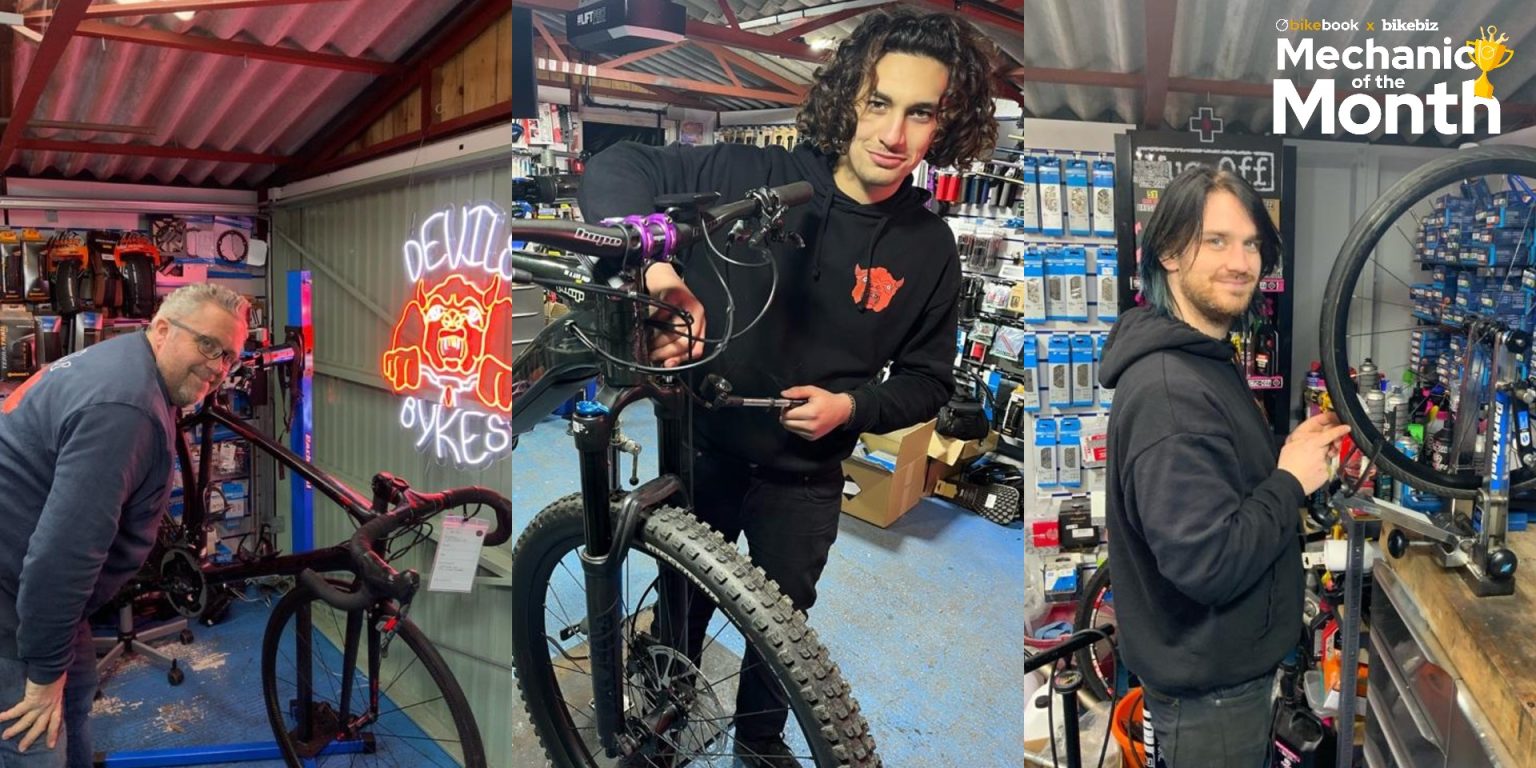December 23, 2025
•
6 minute read
DIY or professional: Adjusting your brakes
A step-by-step guide on how to adjust your brakes for a safe and smooth bike ride. Discover when to consult a professional bike mechanic near you.
Ryan Elson
Founder & CMO
Bike service and maintenance can range from simple tasks for amateur riders to more complicated procedures that require a professional bike mechanic. Knowing when to search for a "bike service near me" or a "bike mechanic near me" is essential. In this guide, we will provide instructions for adjusting your brakes, but remember that more complex maintenance should be left to the experts.
Adjusting your brakes
Step 1 - Check your brakes are centred
Firstly, check if your brakes are sitting straight and in the centre of the forks. Are the brake pads sitting an equal distance from the rim on both sides? You can squeeze the brake and watch to see if the brake pads contact at the same time, or whether one pad pushes the rim across onto the other pad. To straighten the brake, loosen the bolt at the back, realign the brake and then firmly retighten the bolt.
Tip: Be careful to not scratch your frame. If you feel you might, consider putting some electric tape around the frame where you feel the contact may be.
Step 2 - Tighten/Loosen the cable as necessary.
The next step is to check the distance of the pads from the rim. Holding the brake calliper in one hand, loosen the bolt holding the cable and squeeze (or release) the brake callipers a little. This will allow you to move the cable a little easier. Retighten this bolt and secure the cable, and then test how the brakes feel at the lever. Repeat this process until the brake lever feels as you want it to.
Step 3 - Check the Alignment of the brake pads
Now that you've adjusted for brake calliper position and cable tension, its time to align the brake pads. These should be positioned so that they are centred on the braking surface/wheel rim. They should never make contact with the sidewall of the tyre and should never be lower than the braking surface. Spin the wheel and check that the brake pads are aligned with the braking track all the way around. If adjustment is needed, take your Alan key and twist it anticlockwise to loosen the pad. You can then move it as necessary to make it aligned.
Step 4 - Barrel adjuster
Once your cable tension and pad position are set correctly, you can then use the barrel adjuster as necessary to fine tune down the track. Turn this barrel clockwise to move the pads out from the rim, and counter-clockwise to move them closer. This is also the best way to adjust for cable stretch over time, without having to reset cable tension altogether, and allows micro-adjustment from in the saddle when out on your rides.
Disc Brakes
Disc brakes are more complex to adjust than cable or V-brakes. If your disc brake is rubbing, it is most commonly caused by an incorrectly aligned brake calliper, or the wheel having been incorrectly repositioned after removal. Check out the following steps for a home remedy:
Step 1
Before adjusting the brake, it's best to check the wheel is sitting properly. To do this, undo the quick-release skewer, check the wheel is sitting straight in the dropouts, and then firmly retighten the quick release. If the brake is still rubbing, the disc brake itself is the likely culprit and needs correcting. To do this, loosen both bolts on the brake calliper. They don't need to be undone completely, just enough for the calliper to move side to side if you jiggle the calliper with your hand.
Step 2
While squeezing the corresponding brake lever firmly, retighten these bolts. The wheel should now spin freely with little rubbing occurring. If the pads are still rubbing on the brake rotor all the way around, try this process again; sometimes it takes a couple of attempts before the calliper settles in its correct position.
Step 3
If step two is still unsuccessful, you can also try to adjust the calliper by eye. In this image you can see that there is a gap on either side of the rotor. With loosened bolts, realign the calliper by hand, and then whilst holding it firmly in position, tighten the bolts with your other hand.
V - Brakes
Step 1
While holding both arms of the brake with one hand, release the brake cable. As you pull them together it should release.
Step 2
Gently release your hand's pressure on the brake arms until the brake pads are roughly the distance from the rim for optimum braking. You may need to help guide the cable through its clamping point with your free hand.
Step 3
Reattach the brake cable and tighten the bolt. Confirm by squeezing the lever whether the brake lever travel is what you desire.
Step 4
Now that the cable tension has been adequately set, adjust the positioning of the pads. To assist with positioning on the rim, squeeze the brake lever. Whilst the brake pad is loose, you can use your free hand to align the pad so that it is contacting the rim in the centre of the braking surface/rim. Once you're satisfied that the pad isn't set too low or rubbing against the tyre, retighten the bolt, and repeat on the other side.
Step 5
Clear on one side but rubbing on the other? This is where the little screws on each side of the brake come into play. Running up the back of each brake arm is a metal spring, the tension of which is controlled by this screw. If the right brake pad is rubbing, increase tension on the right spring by winding this screw in, which will force the brake arm out. Continue adjusting in this fashion until the pads are not rubbing on the rim, and contacting evenly. Once you're happy with the position of the pads, check how the brake feels when you squeeze it.
If you're struggling with these steps, don't hesitate to search for a "bike mechanic near me" or visit www.bikebook.co.uk to find a professional for more complicated maintenance and servicing tasks. Your safety is essential, so trust the experts when in doubt.



